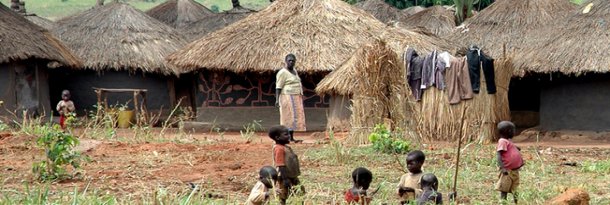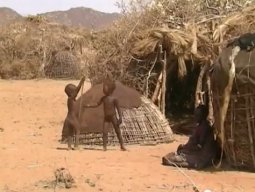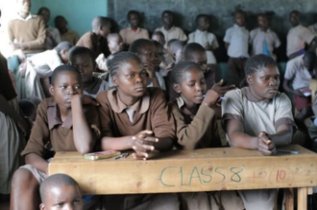|
|
|
Kenya Village Life |
Kenya Village Life |
Kenya Village Life | Kenya Village Life |
Explore
all about the east African country of Kenya in a series of profiles with articles, videos
and images.
More >
|
|

After breakfast and undertaking chores the children will set off for school (below, left). However village schools are rudimentary with desks, chairs blackboards and pencils but no real equipment nor electricity. Children will attend this village primary school until they are 13-14yrs old before taking the Kenya Certificate of Primary Education which informs whether they should attend high school or go onto training.
However, recent droughts across the Horn of Africa have left 2.4 million Kenya villagers with food shortages with an estimated 1.3 million in chronic need of assistance and it is anticipated that this situation will deteriorate over the coming years, particularly in the north of the country. This lack of food has led to conflict in some areas as villagers find themselves in conflict to secure grazing areas for the livestock, with once close water supplies now sometimes more than 12 miles distant. This video documentary charts daily life in a larger village in Kenya with better services such as a Post Office and clinic. |
 Most can't pop upstairs to go to the toilet rather having to
share a communal one, often a hole in the ground with other
villagers which has implications for health, particularly that
of children, with waterborne diseases rife. Other common
illnesses include malaria and HIV/AIDS. (It is estimated that
due to disease in some villages in Kenya 25% of all children are
orphans with another 25% living with a single parent carer.)
Most can't pop upstairs to go to the toilet rather having to
share a communal one, often a hole in the ground with other
villagers which has implications for health, particularly that
of children, with waterborne diseases rife. Other common
illnesses include malaria and HIV/AIDS. (It is estimated that
due to disease in some villages in Kenya 25% of all children are
orphans with another 25% living with a single parent carer.)



 However
the reality is that most children will drop out of education at
this stage for, whilst primary schooling is free, high school is
not and its beyond the financial reach of many Kenyan villagers
costing as much as the equivalent of nine month's income every
year. Boys who drop out will go out to work with their fathers
whilst some girls are married off as young as 12-14yrs to reduce
the family burden. 79% of the Kenyan population live in rural
areas and around half live in poverty (less than 60p a day).
Rather than subsistence farming as in many African countries, in
many areas village men engage in the pastoral farming of cattle,
sheep, and goats particularly in the more arid regions where
camels are also raised. These animals help with transportation
as well as providing milk, blood, meat and wool/ hair for
clothes making. In Kenya the number of animals you own is
considered more important than land ownership.
However
the reality is that most children will drop out of education at
this stage for, whilst primary schooling is free, high school is
not and its beyond the financial reach of many Kenyan villagers
costing as much as the equivalent of nine month's income every
year. Boys who drop out will go out to work with their fathers
whilst some girls are married off as young as 12-14yrs to reduce
the family burden. 79% of the Kenyan population live in rural
areas and around half live in poverty (less than 60p a day).
Rather than subsistence farming as in many African countries, in
many areas village men engage in the pastoral farming of cattle,
sheep, and goats particularly in the more arid regions where
camels are also raised. These animals help with transportation
as well as providing milk, blood, meat and wool/ hair for
clothes making. In Kenya the number of animals you own is
considered more important than land ownership.


